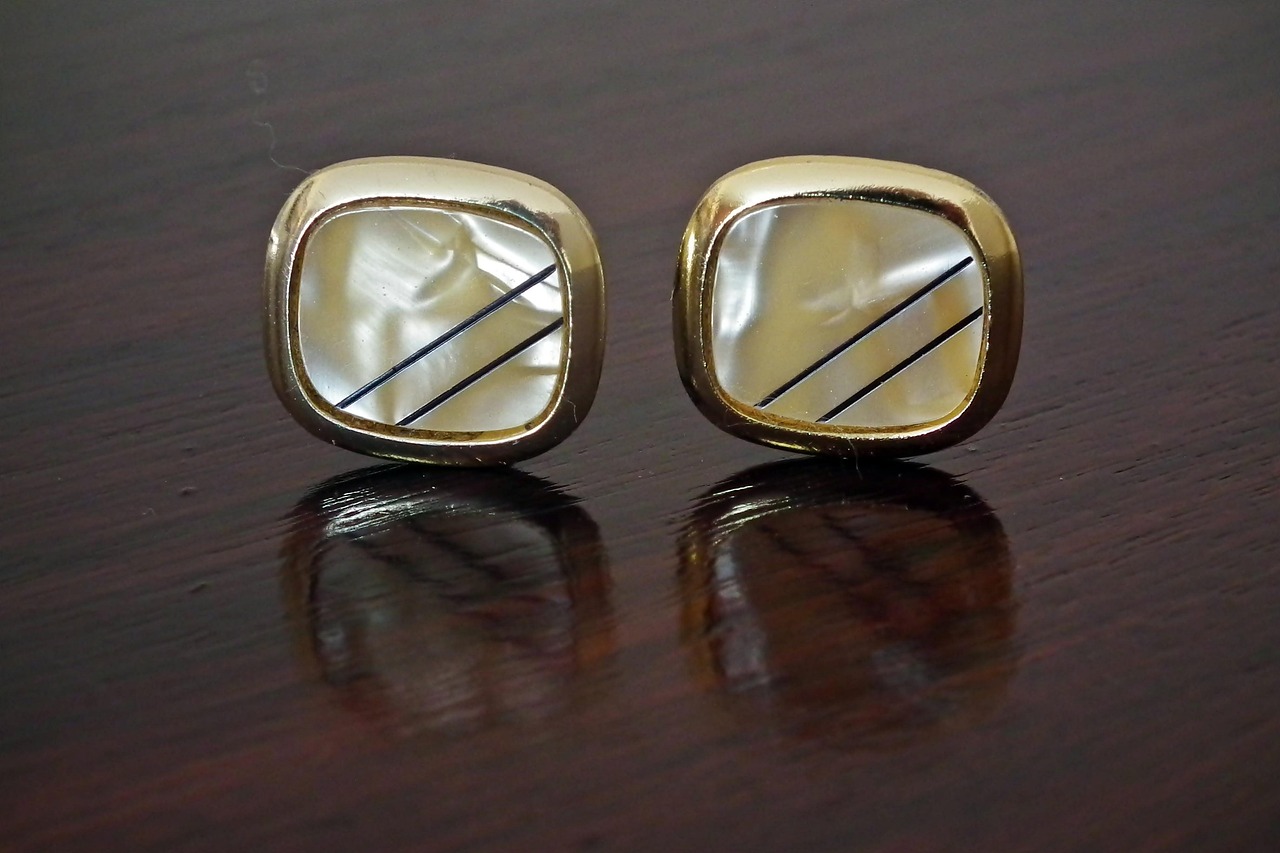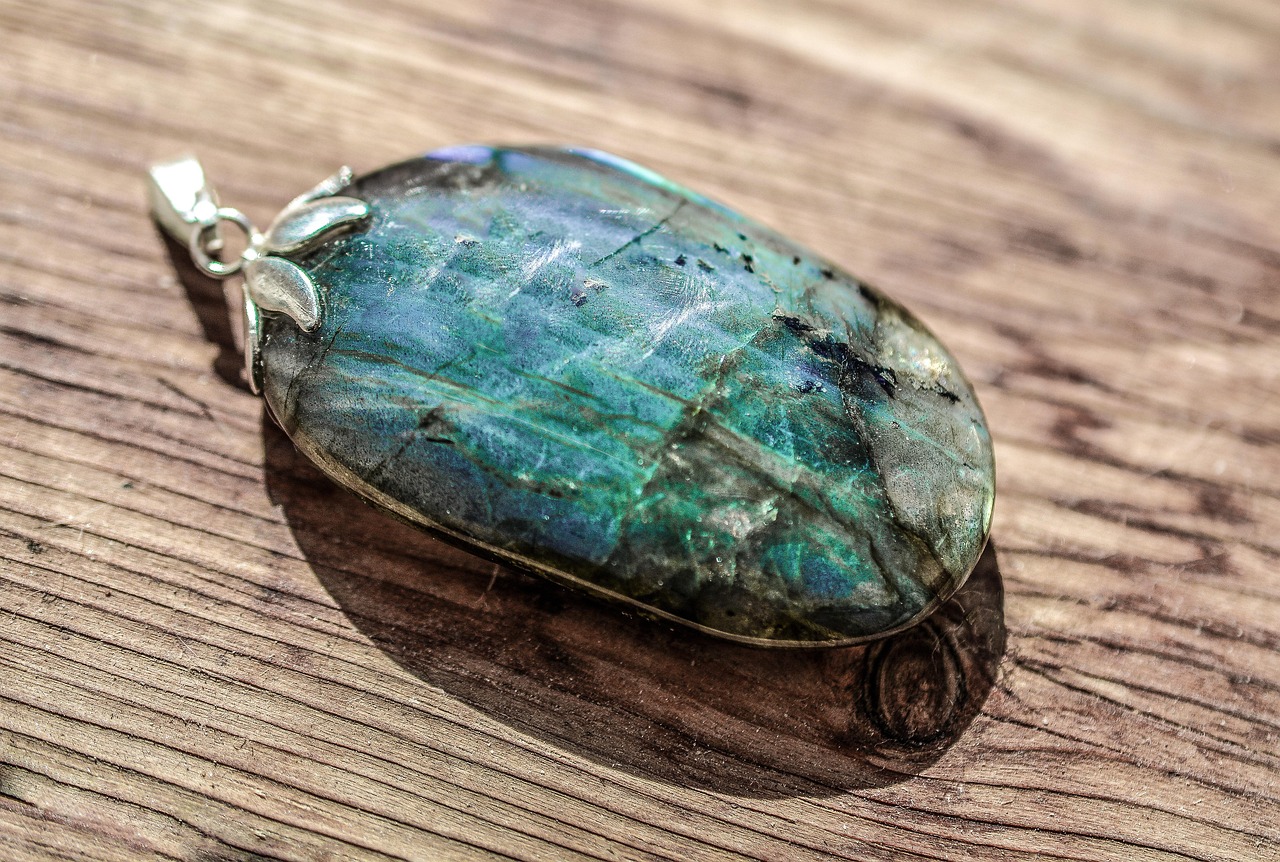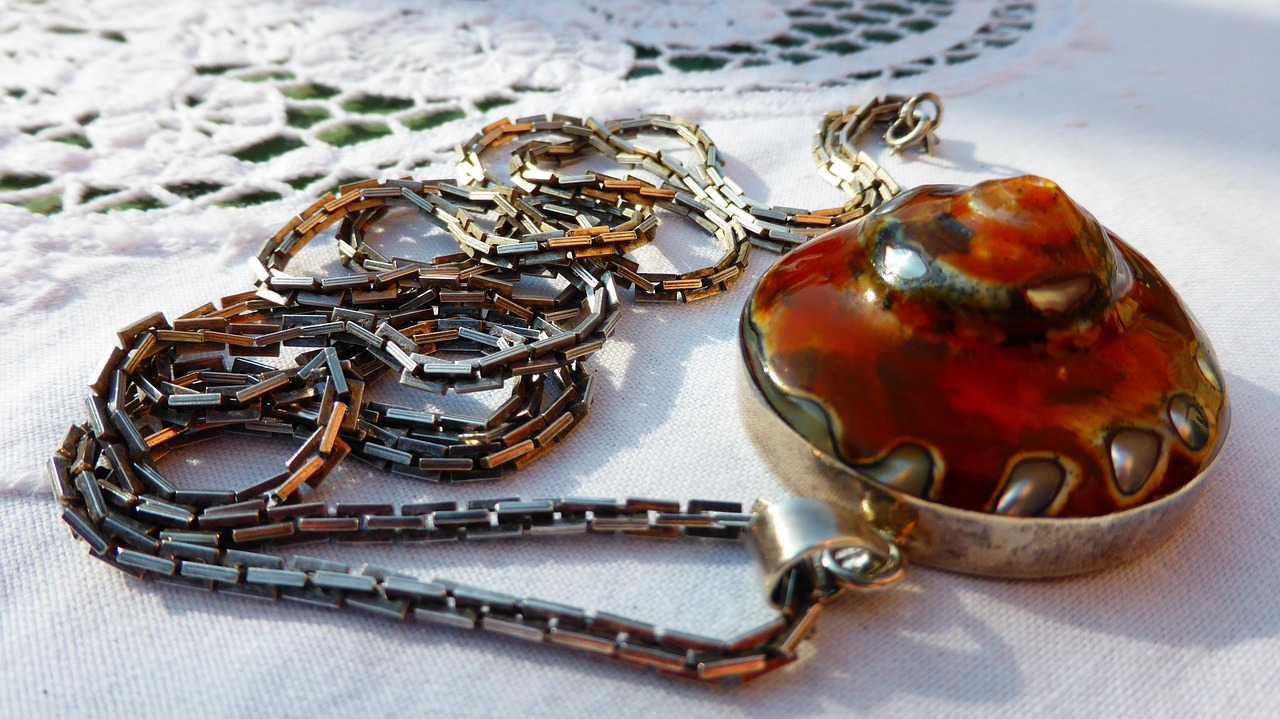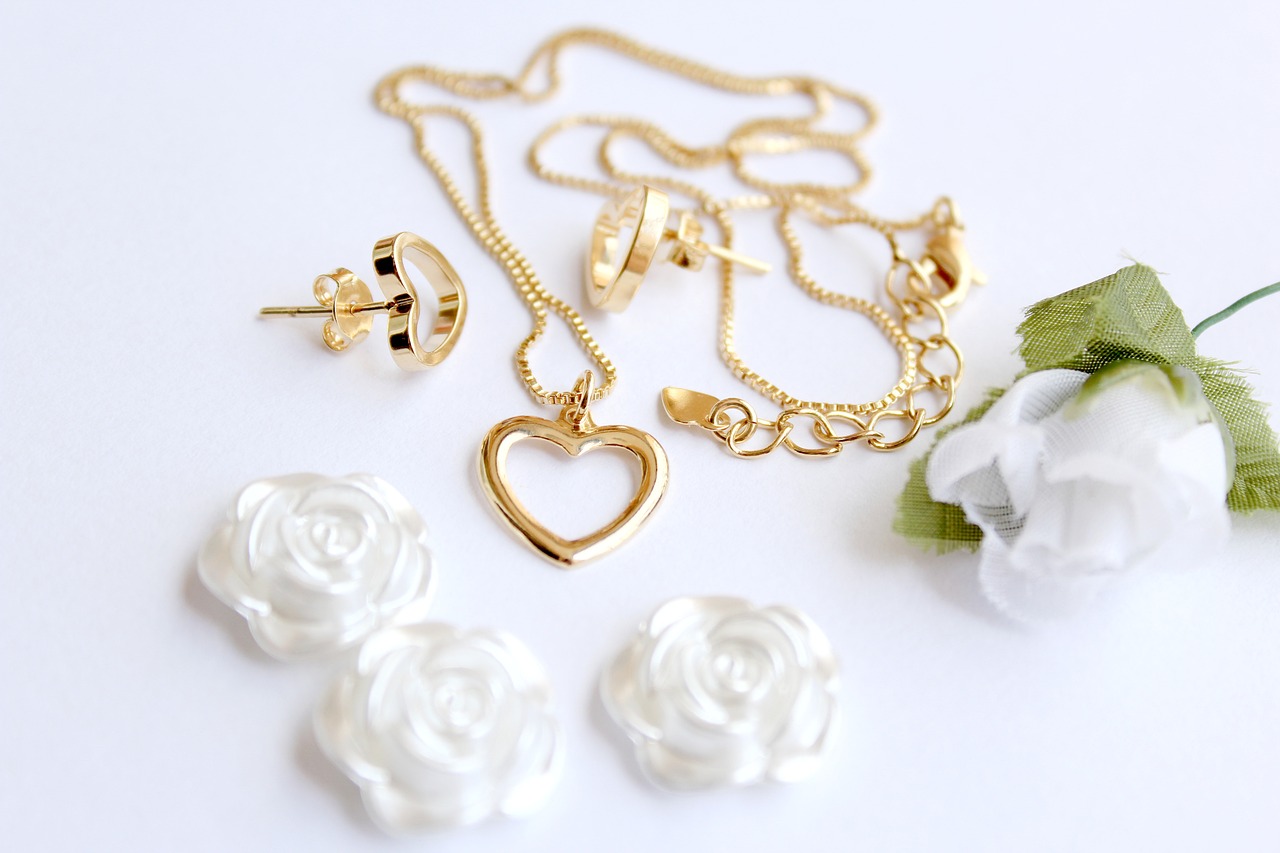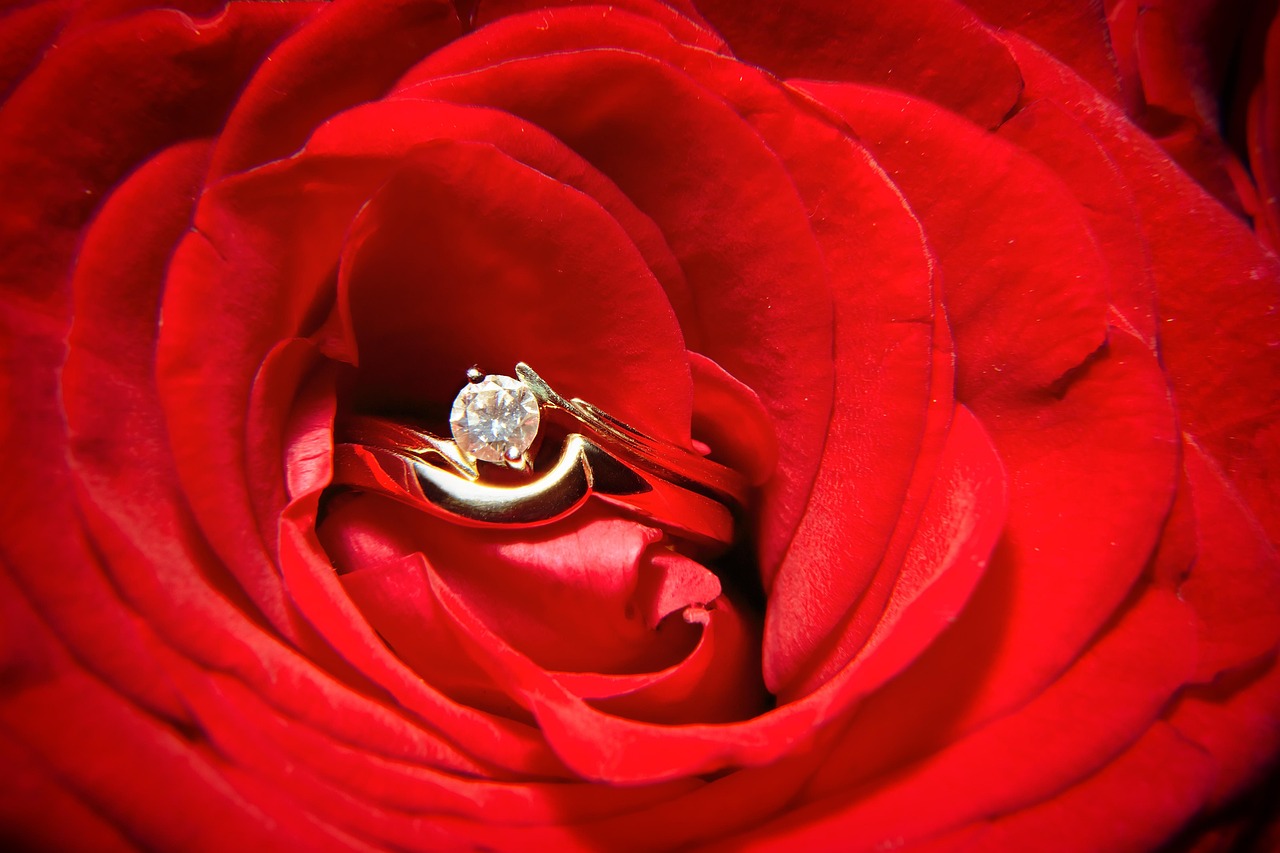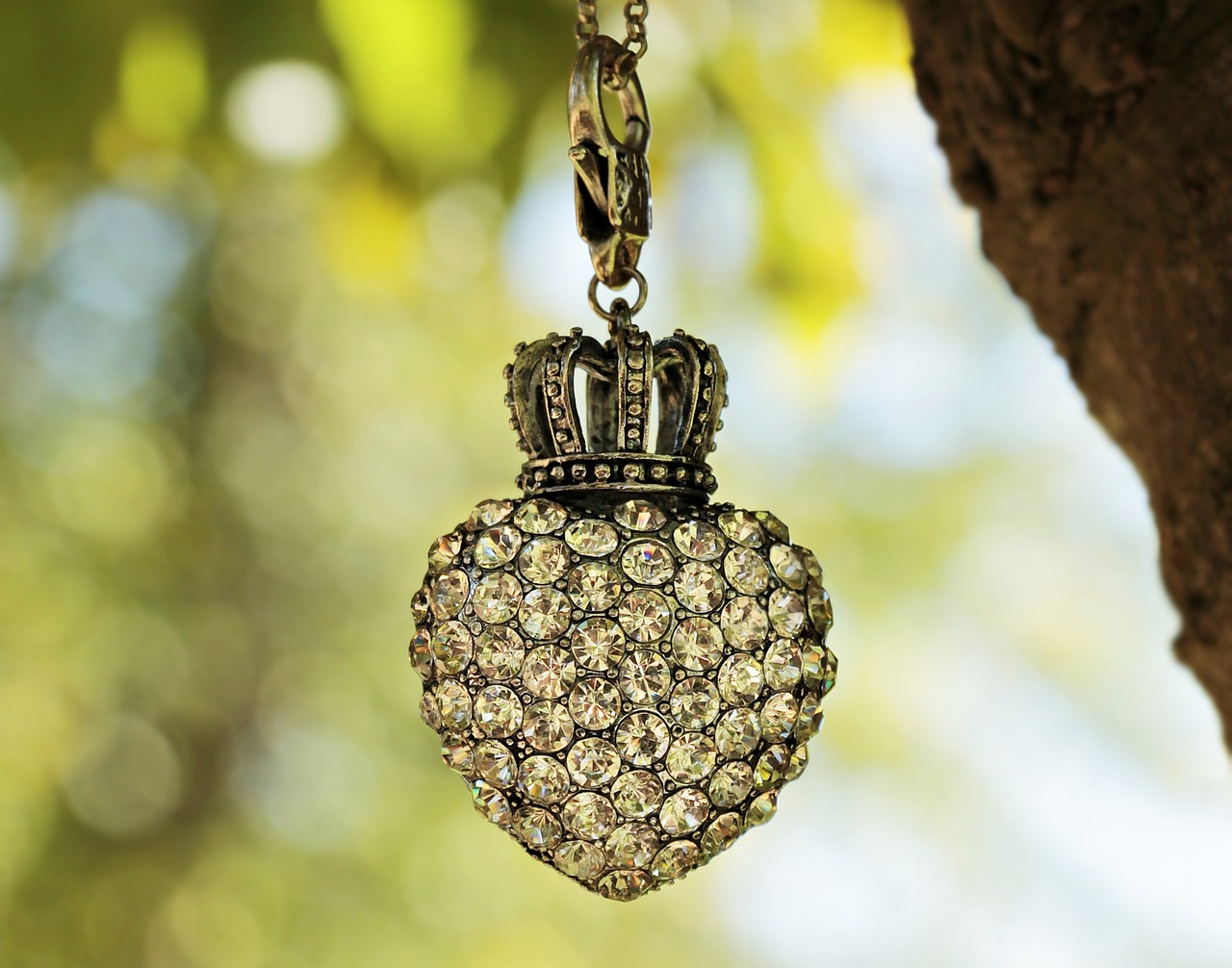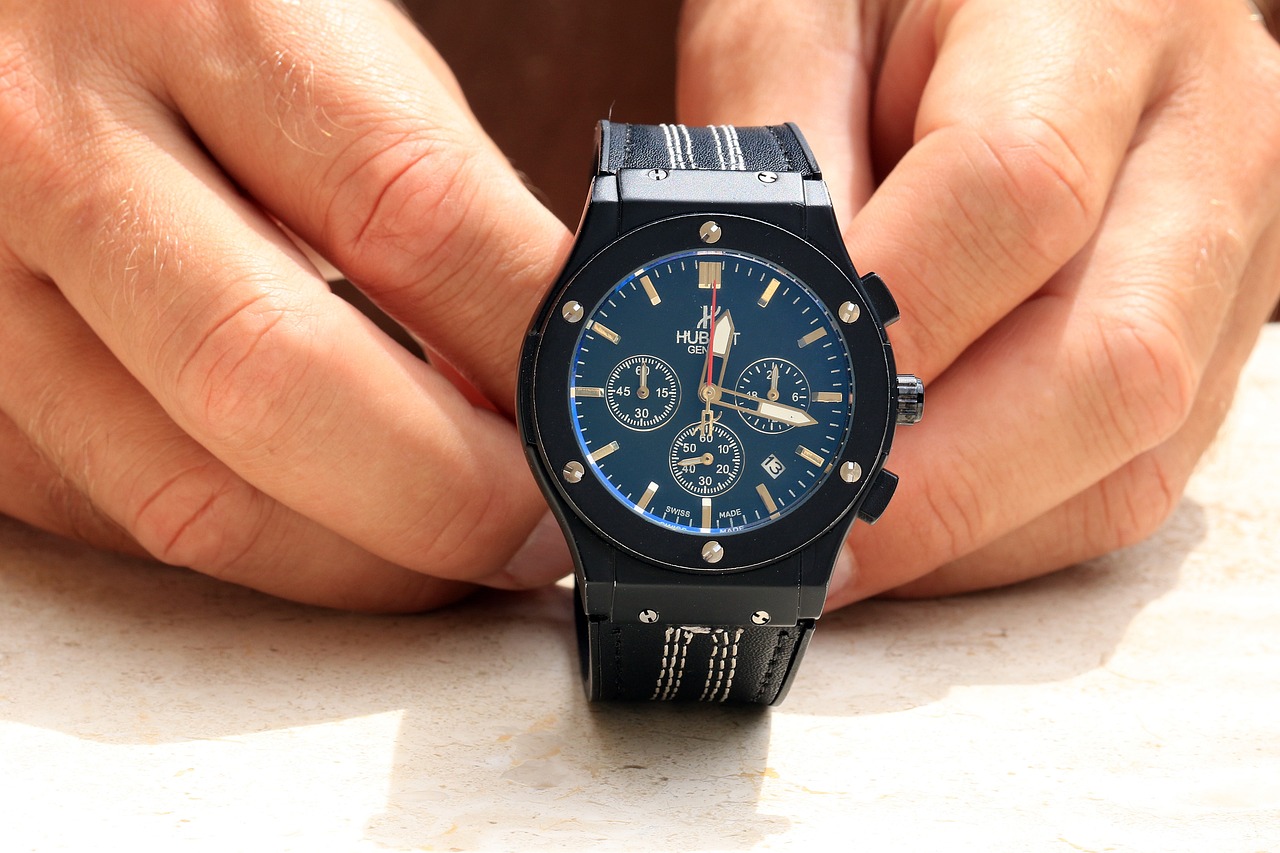In this article, we will explore the effectiveness of ultrasonic cleaners on various types of jewelry, their benefits, limitations, and best practices for safe cleaning. Ultrasonic cleaners are becoming increasingly popular for maintaining the sparkle and shine of jewelry, but not all pieces are created equal when it comes to this cleaning method.
Ultrasonic cleaners are specialized devices that utilize high-frequency sound waves to agitate a cleaning solution. This agitation creates millions of tiny bubbles through a process known as cavitation. These bubbles collapse violently, producing a scrubbing action that can effectively remove dirt, grime, and tarnish from intricate jewelry pieces.
The science behind ultrasonic cleaning lies in the cavitation process. When sound waves pass through the cleaning solution, they cause the liquid to form bubbles that implode on contact with surfaces, dislodging contaminants without the need for manual scrubbing. This method is particularly effective for cleaning hard-to-reach areas in jewelry settings.
While ultrasonic cleaners are effective, not all jewelry is suitable for this cleaning method. Understanding which materials can withstand ultrasonic cleaning is crucial to avoid damaging valuable pieces.
Gold and silver jewelry are generally safe for ultrasonic cleaning. However, it is important to exercise caution with delicate settings or gemstone inlays. Always inspect your jewelry for loose stones before cleaning.
The safety of ultrasonic cleaning varies with gemstones. Soft stones like turquoise and malachite should be avoided, while harder stones like diamonds and sapphires can typically handle ultrasonic cleaning. Always verify the hardness and treatment of your gemstones before proceeding.
While ultrasonic cleaners are effective, they can pose certain risks. Understanding these risks can help you make informed decisions about cleaning your jewelry.
Jewelry with loose stones or intricate settings can be particularly vulnerable during ultrasonic cleaning. The agitation may exacerbate existing issues, leading to potential loss of stones. Always assess the stability of your jewelry before cleaning.
Materials such as pearls, opals, and certain soft gemstones should not be cleaned using ultrasonic methods. These materials require special care, and alternative cleaning methods should be considered to avoid damage.
To maximize the benefits of ultrasonic cleaning while minimizing risks, it is important to follow best practices:
The cleaning solution used in ultrasonic cleaners plays a vital role in achieving effective results. Use solutions specifically designed for jewelry to ensure safety and efficacy. Avoid harsh chemicals that could harm your pieces.
Understanding the appropriate frequency and duration for cleaning is essential. Typically, a cleaning cycle of 3 to 5 minutes is sufficient for most jewelry. Always refer to the manufacturer’s guidelines for specific recommendations based on jewelry type.
If ultrasonic cleaning is not suitable for your jewelry, several alternatives can effectively maintain its shine:
Manual cleaning methods can be gentle yet effective. Use a soft toothbrush and mild soap solution to clean jewelry without causing damage. Rinse thoroughly and dry with a soft cloth.
For valuable or intricate pieces, consider seeking professional cleaning services. Professionals have the expertise and equipment to clean your jewelry safely, ensuring it remains in pristine condition.

What Are Ultrasonic Cleaners?
Ultrasonic cleaners are innovative devices that utilize high-frequency sound waves to create a cleaning process known as cavitation. This process generates microscopic bubbles in a cleaning solution, which then implode with great energy, effectively dislodging dirt, grime, and contaminants from various surfaces. This technology has gained popularity for its ability to clean intricate items, making it particularly useful in various industries, including jewelry, electronics, and medical fields.
When it comes to jewelry cleaning, ultrasonic cleaners are especially valued for their efficiency and thoroughness. Unlike manual cleaning methods that may leave behind residues in crevices and intricate designs, ultrasonic cleaners can reach these hard-to-access areas effortlessly. The agitation from the bubbles ensures that every nook and cranny is cleaned without the need for harsh scrubbing, which can potentially damage delicate pieces.
The science behind ultrasonic cleaning is fascinating. When the ultrasonic cleaner is activated, it emits sound waves that travel through the cleaning solution. These sound waves create alternating high and low-pressure cycles, resulting in the formation of tiny bubbles. As these bubbles collapse, they produce shock waves that dislodge dirt and contaminants from surfaces. This process is not only effective for cleaning jewelry but also for sterilizing instruments in medical settings.
While ultrasonic cleaners are highly effective, not all jewelry is suitable for this cleaning method. Gold and silver jewelry are generally safe for ultrasonic cleaning, but caution should be exercised with pieces that have delicate settings or loose stones. In contrast, gemstone jewelry requires careful consideration. Some gemstones, such as diamonds and sapphires, can withstand ultrasonic cleaning, while others, like opals and pearls, may be damaged.
Despite their effectiveness, ultrasonic cleaners come with certain risks. For example, if a piece of jewelry has loose stones or intricate settings, the agitation from the ultrasonic cleaner may worsen these issues. Additionally, delicate materials such as pearls, coral, and certain soft gemstones can be damaged by the ultrasonic cleaning process. It is crucial to assess the condition of your jewelry before using an ultrasonic cleaner.
To ensure the best results while minimizing risks, it is essential to follow best practices. First, choosing the right cleaning solution is vital. Not all cleaning solutions are suitable for every type of jewelry, so it is important to select one that is specifically designed for use in ultrasonic cleaners. Furthermore, understanding the frequency and duration of cleaning can prevent potential damage. Generally, a lower frequency is gentler on delicate items, while a higher frequency is more effective for tougher grime.
If ultrasonic cleaning is not an option for your jewelry, there are several effective alternatives. Manual cleaning techniques can be gentle yet effective, allowing for precise control over the cleaning process. For valuable or intricate pieces, seeking professional cleaning services may be the best course of action. Professionals have the expertise and tools necessary to clean your jewelry without risking damage.

How Do Ultrasonic Cleaners Work?
Ultrasonic cleaners have revolutionized the way we clean jewelry and other intricate items. By utilizing high-frequency sound waves, these devices create a cleaning process that is both efficient and effective. Understanding how ultrasonic cleaners work can significantly enhance your appreciation for their capabilities.
What is Cavitation? At the heart of ultrasonic cleaning lies the phenomenon known as cavitation. This process occurs when ultrasonic waves pass through a liquid, generating alternating high and low-pressure waves. During the low-pressure phase, microscopic bubbles form in the cleaning solution. These bubbles grow until they reach a critical size, and during the high-pressure phase, they implode, creating tiny shock waves. This implosion is what effectively dislodges dirt, grime, and contaminants from surfaces, including the intricate details of jewelry.
The power of cavitation is particularly evident in the cleaning of jewelry. The imploding bubbles can reach into the tiny crevices and hard-to-reach areas of your pieces, ensuring a thorough clean without the need for manual scrubbing. This is especially beneficial for items with intricate designs, such as rings and necklaces, which often trap dirt and oils that are difficult to remove by hand.
How Does Ultrasonic Cleaning Benefit Jewelry? One of the primary advantages of ultrasonic cleaning is its ability to clean without causing damage. Traditional cleaning methods often require scrubbing or abrasive materials that can scratch or wear down delicate surfaces. In contrast, ultrasonic cleaners provide a gentle yet effective cleaning solution. The process is safe for most metals, including gold and silver, as well as many gemstones, making it a versatile option for jewelry care.
What Types of Solutions Can Be Used? The cleaning solution used in ultrasonic cleaners is crucial for achieving optimal results. Many ultrasonic cleaners come with specific solutions designed for various materials. These solutions can enhance the cleaning process by breaking down oils and residues more effectively than plain water. It is essential to choose a solution that is compatible with your jewelry to avoid any potential damage.
Frequency Matters The frequency at which the ultrasonic cleaner operates also plays a significant role in its effectiveness. Most ultrasonic cleaners operate between 20 kHz and 40 kHz. Lower frequencies tend to produce larger cavitation bubbles, which can be more aggressive and effective for heavy-duty cleaning. Higher frequencies create smaller bubbles, resulting in a gentler cleaning action, ideal for delicate items. Understanding the right frequency for your jewelry type can help you achieve the best results.
How Long Should You Clean Your Jewelry? Timing is another critical factor in ultrasonic cleaning. Depending on the type of jewelry and the level of dirt, cleaning times can vary. Generally, a cleaning cycle can last anywhere from a few minutes to around 20 minutes. It is advisable to start with shorter cleaning times and gradually increase as needed, monitoring your jewelry for any signs of damage.
In summary, the science behind ultrasonic cleaning is rooted in the effective cavitation process that allows for deep cleaning without the risks associated with manual scrubbing. By understanding how ultrasonic cleaners work, you can make informed decisions about maintaining your jewelry, ensuring it remains in pristine condition while effectively removing dirt and grime.
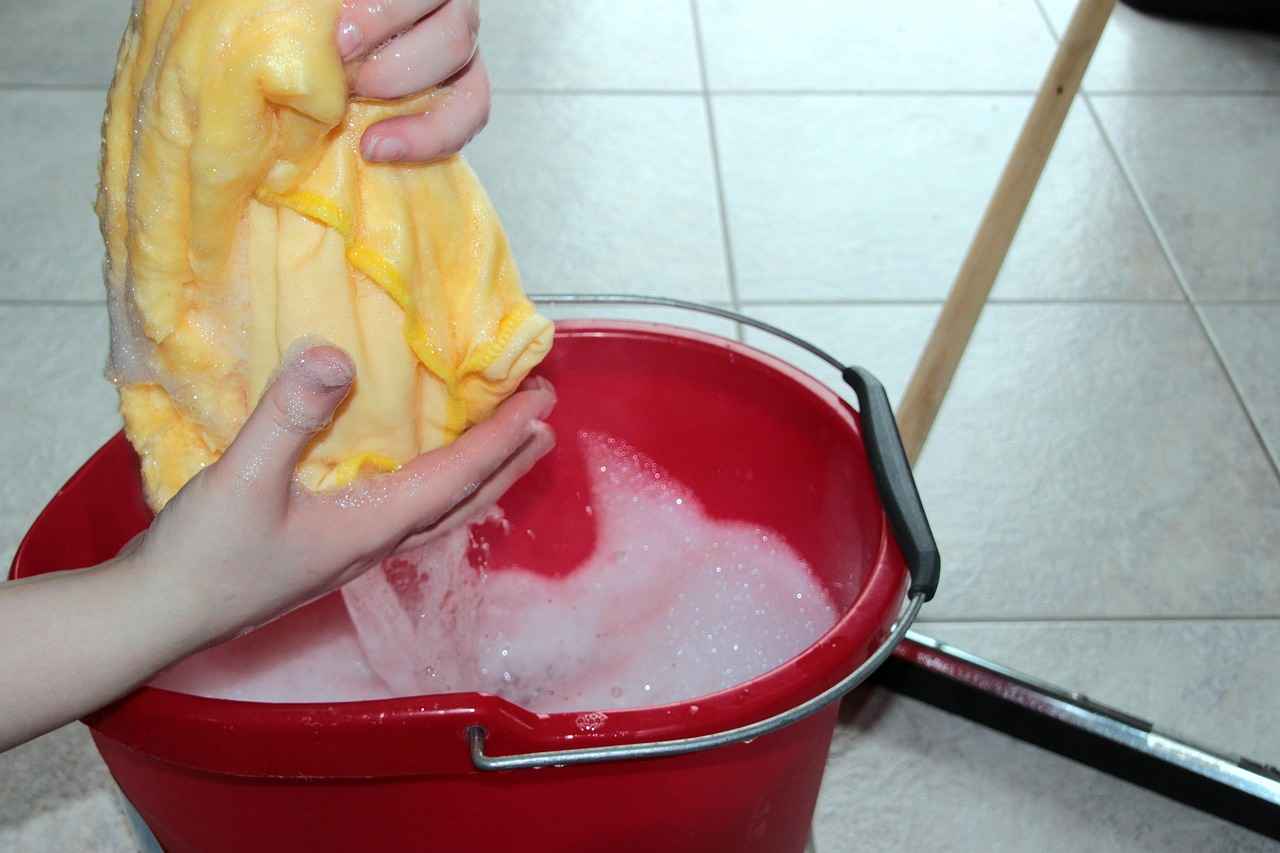
Which Types of Jewelry Can Be Cleaned?
When it comes to maintaining the brilliance of your jewelry, understanding the best cleaning methods is essential. While ultrasonic cleaning is a popular choice, it’s crucial to know that not all jewelry is suitable for this method. In this section, we will explore which types of jewelry can be safely cleaned using ultrasonic cleaners, ensuring your valuable pieces remain intact.
Ultrasonic cleaners are effective for many types of jewelry, but caution is necessary. Here are the categories of jewelry that can benefit from ultrasonic cleaning:
- Gold Jewelry: Most gold jewelry is safe for ultrasonic cleaning. However, pieces with delicate settings or loose stones should be assessed carefully to prevent damage.
- Silver Jewelry: Similar to gold, silver jewelry can be cleaned using ultrasonic methods. Be mindful of tarnished pieces, as ultrasonic cleaners can sometimes exacerbate tarnishing if not used correctly.
- Diamond Jewelry: Diamonds are durable and can withstand ultrasonic cleaning. However, ensure that the settings are secure to avoid losing any stones during the cleaning process.
- Stainless Steel Jewelry: This material is robust and can be safely cleaned using ultrasonic cleaners. It’s a great option for those who wear jewelry daily and want to maintain its shine.
While many types of jewelry can be cleaned using ultrasonic methods, certain materials and stones require special attention:
- Gemstone Jewelry: The safety of ultrasonic cleaning varies greatly with gemstones. For example, emeralds and opals are typically not recommended for this method due to their porous nature, which can trap cleaning solutions and cause damage.
- Pearls: Pearls are delicate and can be harmed by ultrasonic cleaning. The agitation can lead to scratches and may weaken the nacre, impacting their luster.
- Coral and Ivory: These organic materials are sensitive and should never be subjected to ultrasonic cleaning. Instead, opt for gentle manual cleaning methods.
Before using an ultrasonic cleaner, always check for any loose stones or compromised settings. If you have any doubts about the safety of cleaning a particular piece, consult a professional jeweler. They can provide insights on the best cleaning practices tailored to your jewelry.
In summary, while ultrasonic cleaners can effectively clean a variety of jewelry types, it’s essential to exercise caution with certain materials. By understanding which pieces are safe for ultrasonic cleaning and which should be cleaned by hand, you can maintain the beauty and integrity of your treasured items.
Gold and Silver Jewelry
When it comes to cleaning your jewelry, especially gold and silver, many people wonder about the safety and effectiveness of using ultrasonic cleaners. These devices are known for their ability to remove dirt and grime effectively, but it’s essential to understand how they interact with different types of jewelry.
Gold and silver jewelry are generally considered safe for ultrasonic cleaning. However, it’s crucial to take certain precautions to ensure that your pieces remain undamaged. The ultrasonic cleaning process uses high-frequency sound waves to create tiny bubbles in a cleaning solution. These bubbles collapse and create a scrubbing action that can effectively clean intricate designs and hard-to-reach areas.
- Check for Loose Stones: Before placing your jewelry in an ultrasonic cleaner, inspect it for any loose stones. The agitation caused by the ultrasonic waves can dislodge stones that are not securely set, leading to potential loss or damage.
- Delicate Settings: Jewelry with delicate or intricate settings may require special attention. While gold and silver themselves are durable, the settings may not withstand the cleaning process if they are thin or fragile.
- Cleaning Solutions: Use a cleaning solution that is specifically designed for ultrasonic cleaning. Avoid harsh chemicals that can tarnish or damage the metal.
While gold and silver are generally safe, certain factors can affect the outcome of ultrasonic cleaning:
- Plating: If your gold jewelry is plated, ultrasonic cleaning may strip away the plating over time, revealing the base metal underneath.
- Oxidation: Silver jewelry can tarnish due to oxidation. While ultrasonic cleaning can remove tarnish, it may not be effective for heavily tarnished pieces. In such cases, manual cleaning may be more appropriate.
For those who are unsure, it is always best to consult with a professional jeweler before using an ultrasonic cleaner. They can provide guidance based on the specific characteristics of your jewelry.
In summary, while ultrasonic cleaning is an effective method for maintaining the shine and cleanliness of gold and silver jewelry, it is essential to approach the process with caution. By following best practices and being aware of the limitations, you can enjoy your jewelry’s brilliance without risking damage.
Gemstone Jewelry
The safety of ultrasonic cleaning varies significantly with different types of gemstones. While ultrasonic cleaners are highly effective for many jewelry items, they can pose risks to certain gemstones due to their unique properties. Understanding which gemstones are safe to clean using ultrasonic methods is essential for maintaining the integrity and beauty of your jewelry.
- Diamonds: One of the hardest gemstones, diamonds can withstand ultrasonic cleaning. They are not only resistant to scratching but also can endure the agitation process without damage.
- Sapphires: Similar to diamonds, sapphires are durable and can be safely cleaned using ultrasonic methods. However, ensure that the setting is secure before proceeding.
- Rubies: Rubies, being a variety of sapphire, share similar hardness and cleaning safety. Ultrasonic cleaning is generally safe for rubies, provided they are properly set.
- Topaz: Most varieties of topaz can be cleaned ultrasonically. However, caution should be exercised with treated topaz, as the treatments may not be as resilient.
- Pearls: Pearls are organic gemstones and are highly sensitive to ultrasonic cleaning. The process can damage their surface and luster, so manual cleaning is recommended.
- Opals: Opals contain water within their structure, making them vulnerable to cracking under the stress of ultrasonic waves. Avoid using ultrasonic cleaners on opals to prevent irreversible damage.
- Emeralds: Often treated with oils to enhance their clarity, emeralds can be damaged in ultrasonic cleaners. The agitation may dislodge the oil and harm the stone.
- Turquoise: Being porous, turquoise can absorb cleaning solutions and may lose its color or finish when subjected to ultrasonic cleaning.
Before deciding to use an ultrasonic cleaner on gemstone jewelry, consider the following:
- Stone Hardness: Harder stones like diamonds and sapphires are typically safe, while softer stones require more caution.
- Stone Treatments: Many gemstones undergo treatments that can affect their durability. Always check if your gemstone has been treated before cleaning.
- Setting Security: Ensure that all stones are securely set in their mounts, as loose stones may become dislodged during the cleaning process.
By understanding the properties of your gemstones and following these guidelines, you can effectively use ultrasonic cleaners while preserving the beauty and integrity of your jewelry. If in doubt, consult with a professional jeweler to determine the best cleaning method for your specific pieces.
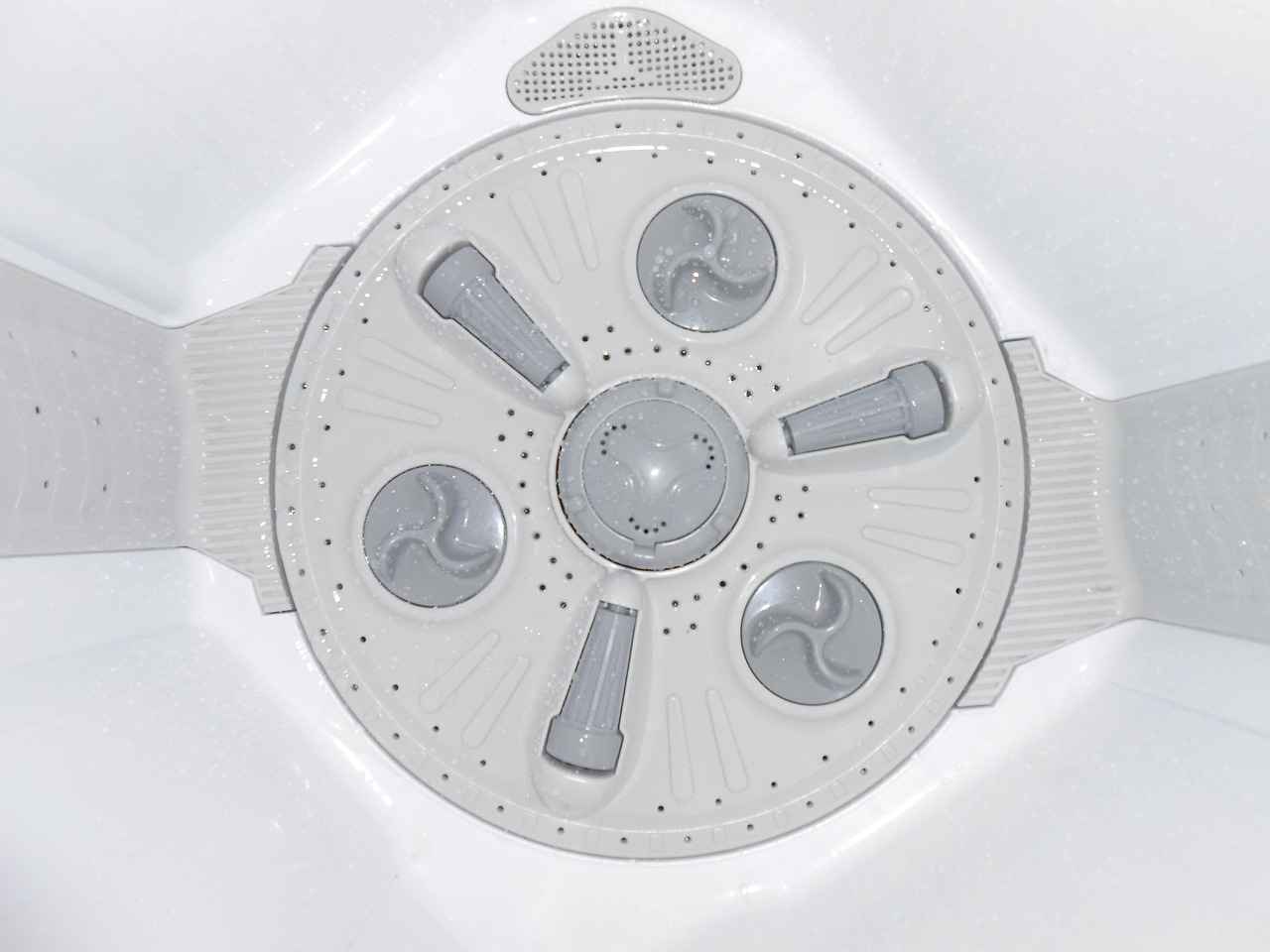
Are There Any Risks Involved?
When it comes to cleaning jewelry, ultrasonic cleaners have gained immense popularity due to their ability to effectively remove dirt and grime from intricate pieces. However, understanding the risks involved is crucial for ensuring the longevity and integrity of your jewelry. This section will delve into the potential hazards associated with ultrasonic cleaning, helping you make informed decisions.
While ultrasonic cleaners are generally safe for many types of jewelry, there are specific risks that must be considered:
- Damage to Delicate Settings: Jewelry with intricate settings or loose stones may be at risk. The high-frequency vibrations can exacerbate existing issues, leading to further loosening of stones or even complete detachment.
- Material Compatibility: Not all materials are suitable for ultrasonic cleaning. For instance, pearls, opals, and certain porous stones are particularly vulnerable and can suffer damage when exposed to ultrasonic waves.
- Finish and Plating Damage: Jewelry that has a thin plating or a delicate finish may lose its luster or even the plating itself during the cleaning process. It’s essential to assess the quality of the jewelry before using an ultrasonic cleaner.
Before deciding to use an ultrasonic cleaner, it is vital to conduct a thorough assessment of your jewelry:
- Check for Loose Stones: Gently tap the stones in their settings. If they move or feel loose, it is best to avoid ultrasonic cleaning.
- Identify the Material: Know the materials that comprise your jewelry. If it includes delicate components, consider alternative cleaning methods.
- Consult with a Professional: If you are uncertain about the safety of ultrasonic cleaning for a particular piece, consult a professional jeweler for advice.
If your jewelry is not suitable for ultrasonic cleaning, there are several effective alternatives:
- Manual Cleaning: Using a soft cloth or a gentle brush with mild soap and water can effectively clean most jewelry without the risks associated with ultrasonic cleaning.
- Professional Cleaning Services: For valuable or intricate pieces, professional cleaning services can provide a safe and thorough cleaning, ensuring that all risks are mitigated.
In conclusion, while ultrasonic cleaners offer a convenient method for cleaning jewelry, it is essential to recognize and understand the potential risks involved. By carefully assessing your jewelry and considering alternative cleaning methods, you can ensure that your cherished pieces remain in pristine condition.
Loose Stones and Settings
Loose stones and intricate settings can present significant challenges when it comes to cleaning jewelry. While ultrasonic cleaners are effective at removing dirt and grime, they can also inadvertently exacerbate existing issues. In this section, we will delve into how to assess the risks associated with ultrasonic cleaning for jewelry that features loose stones or complex settings.
Ultrasonic cleaners operate by producing high-frequency sound waves that create microscopic bubbles in a cleaning solution. When these bubbles collapse, they generate tiny shockwaves that dislodge dirt and debris from surfaces. However, this powerful cleaning method may not be suitable for all types of jewelry, especially those with loose stones or delicate settings.
- Visual Inspection: Begin by examining your jewelry closely. Look for any stones that seem to move or wiggle in their settings.
- Tap Test: Gently tap the stones with a soft object. If you hear a sound or feel movement, the stone is likely loose.
- Professional Evaluation: For valuable pieces, consider having a jeweler assess the integrity of the settings.
Jewelry with intricate designs may have tiny crevices and detailed craftsmanship that can trap dirt. While ultrasonic cleaning can effectively clean these areas, it can also dislodge stones or damage delicate features. Here are some tips to consider:
- Material Type: Certain materials, such as platinum or gold, are more durable than others and may withstand ultrasonic cleaning better.
- Stone Type: Some stones, like diamonds, are generally safe, while softer stones like emeralds or pearls may be at risk.
If you decide to use an ultrasonic cleaner despite the risks, follow these best practices to minimize potential damage:
- Test on a Small Area: If possible, test the ultrasonic cleaner on a less visible part of the jewelry first.
- Use a Gentle Cleaning Solution: Opt for a mild cleaning solution specifically designed for delicate items.
- Limit Cleaning Time: Start with a short cleaning cycle and gradually increase if necessary, monitoring the jewelry closely.
If your jewelry has loose stones or intricate settings, consider alternative cleaning methods:
- Manual Cleaning: Use a soft brush and a mild soap solution to gently clean your jewelry without risking damage.
- Professional Cleaning: For valuable or intricate pieces, seeking professional cleaning services can ensure safe and effective care.
In conclusion, while ultrasonic cleaners can be effective tools for cleaning jewelry, it is essential to carefully assess the condition of your pieces before using them. By understanding the risks associated with loose stones and intricate settings, you can make informed decisions that protect your valuable jewelry.
Delicate Materials
When it comes to cleaning jewelry, not all materials are created equal. such as pearls and opals require special attention and care, especially when it comes to ultrasonic cleaning methods. This section will delve into why these materials are sensitive and how to effectively care for them without compromising their beauty.
Pearls are unique organic gems formed by living mollusks, making them particularly sensitive to harsh cleaning methods. The nacre that composes pearls can be damaged by the intense vibrations produced during ultrasonic cleaning. This can lead to:
- Surface Damage: The outer layer of the pearl can become scratched or dull.
- Structural Weakness: The internal structure may weaken, leading to potential cracking.
For these reasons, it is recommended to clean pearls gently with a soft cloth and mild soap solution, avoiding any ultrasonic cleaners entirely.
Opals are another delicate jewelry material that should be treated with caution. Their unique structure contains a significant amount of water, making them more susceptible to damage from high-frequency vibrations. The risks associated with ultrasonic cleaning of opals include:
- Cracking: The rapid temperature changes can cause opals to crack.
- Loss of Color: Opals can lose their vibrant colors and luster if subjected to harsh cleaning methods.
Instead of ultrasonic cleaning, it is advisable to clean opals using a damp cloth and a soft brush, ensuring that they remain in pristine condition.
For those who own jewelry made from pearls or opals, there are several gentle cleaning methods that can be employed:
- Warm Soapy Water: Mix a few drops of mild dish soap in warm water and gently clean the jewelry using a soft cloth.
- Soft Brush: Use a soft-bristled brush to remove dirt from hard-to-reach areas, ensuring you are gentle to avoid scratching.
- Professional Cleaning: For valuable pieces, consider taking your jewelry to a professional cleaner who specializes in delicate materials.
To maintain the beauty and longevity of your delicate jewelry, consider the following best practices:
- Store Properly: Keep pearls and opals in a soft pouch or lined jewelry box to prevent scratches.
- Avoid Exposure: Keep these materials away from harsh chemicals, cosmetics, and extreme temperatures.
- Regular Maintenance: Regularly inspect your jewelry for signs of wear and tear, and clean gently to maintain its appearance.
In summary, while ultrasonic cleaners can effectively clean many types of jewelry, like pearls and opals require special care. By understanding the unique properties of these gems and employing gentle cleaning methods, you can ensure that your treasured pieces remain beautiful and intact for years to come.

Best Practices for Using Ultrasonic Cleaners
When it comes to maintaining the brilliance and longevity of your jewelry, ultrasonic cleaners can be an invaluable tool. However, to ensure that you maximize the benefits while minimizing potential risks, it is essential to follow best practices for using these devices. Below are some comprehensive tips for effective and safe ultrasonic cleaning of your jewelry.
The cleaning solution is a critical component of the ultrasonic cleaning process. Using the appropriate solution can enhance the cleaning effectiveness while protecting your jewelry. Here are some guidelines:
- Water-Based Solutions: For most jewelry, a simple water-based solution is sufficient. Adding a few drops of mild dish soap can help remove grime without causing damage.
- Avoid Harsh Chemicals: Stay away from solutions containing bleach, ammonia, or other harsh chemicals that can damage certain materials.
- Specialized Solutions: For specific types of jewelry, such as those with intricate settings or specific gemstones, consider using a specialized ultrasonic cleaning solution designed for that purpose.
Understanding how long and at what frequency to operate your ultrasonic cleaner is vital for preventing damage:
- Optimal Frequency: Most ultrasonic cleaners operate between 20 kHz to 40 kHz. Higher frequencies are gentler and suitable for delicate items, while lower frequencies are more effective for heavy-duty cleaning.
- Cleaning Duration: Generally, a cleaning cycle should last between 3 to 10 minutes. For heavily soiled items, you may extend the time slightly, but always monitor the process.
- Test First: If you are unsure, start with a shorter cleaning time and gradually increase it to find the optimal duration for your specific jewelry.
Before placing your jewelry in the ultrasonic cleaner, conduct a thorough inspection:
- Check for Loose Stones: Ensure that all stones are secure in their settings. Ultrasonic cleaning can exacerbate issues with loose stones.
- Examine for Damage: Look for any signs of wear or damage, such as cracks or chips, which may worsen during the cleaning process.
- Identify Sensitive Materials: Certain materials, such as pearls and opals, should be cleaned using alternative methods as they can be damaged by ultrasonic cleaners.
After the cleaning process, it is essential to take care of your jewelry properly:
- Rinse Thoroughly: Rinse your jewelry under clean water to remove any residual cleaning solution.
- Dry Gently: Use a soft, lint-free cloth to gently dry your jewelry. Avoid using paper towels, as they can scratch delicate surfaces.
- Store Properly: Store your jewelry in a safe place, preferably in a soft pouch or a dedicated jewelry box to prevent scratches and tangling.
By adhering to these best practices, you can enjoy the benefits of ultrasonic cleaning while ensuring that your jewelry remains in excellent condition. Remember, when in doubt, consult with a professional jeweler for advice tailored to your specific pieces.
Choosing the Right Cleaning Solution
When it comes to maintaining the beauty and longevity of your jewelry, for ultrasonic cleaners is essential. Not all cleaning solutions are created equal, and using the wrong one can lead to damage or ineffective cleaning. In this section, we will explore the various types of cleaning solutions that are safe and effective for different types of jewelry.
Ultrasonic cleaners work by creating high-frequency sound waves that agitate a cleaning solution, producing tiny bubbles that effectively lift dirt and grime from surfaces. The effectiveness of this process largely depends on the cleaning solution used. Here are some popular options:
- Water-Based Solutions: These are generally safe for most jewelry types. A simple mixture of warm water and a few drops of dish soap can work wonders.
- Commercial Ultrasonic Cleaning Solutions: Specifically formulated for ultrasonic cleaners, these solutions often contain surfactants that enhance cleaning power. Ensure they are suitable for the type of jewelry you are cleaning.
- Alcohol-Based Solutions: Isopropyl alcohol can be effective for cleaning certain metals and stones but should be used cautiously, as it can damage some materials.
- pH-Neutral Solutions: These are gentle on jewelry and help avoid chemical reactions that could cause tarnishing or discoloration.
Understanding which cleaning solutions are appropriate for specific jewelry types is crucial for preserving their integrity:
- Gold and Silver: Most cleaning solutions are safe for these metals, but avoid harsh chemicals that can cause tarnishing.
- Gemstone Jewelry: The safety of cleaning solutions varies by gemstone. For example, diamonds can handle most solutions, while softer stones like emeralds or pearls may require special care.
- Costume Jewelry: Often made with various materials, including plastic and glass, these pieces may not withstand strong cleaning solutions. A mild soap solution is generally best.
To ensure the safety of your jewelry, it is important to avoid certain types of cleaning solutions:
- Acidic Solutions: These can damage metals and gemstones, leading to irreversible harm.
- Bleach and Ammonia: Strong chemicals like these can strip away finishes and cause discoloration.
- Highly Abrasive Solutions: Avoid any solution with abrasive particles that could scratch the surface of your jewelry.
Once you have selected the appropriate cleaning solution, using it correctly is crucial for effective results:
1. Fill the ultrasonic cleaner with the chosen solution, adhering to manufacturer guidelines.2. Submerge the jewelry in the solution, ensuring it is fully covered.3. Set the timer according to the type of jewelry; generally, 3-5 minutes is sufficient.4. Rinse the jewelry under warm water to remove any residue from the cleaning solution.5. Dry gently with a soft cloth.
In summary, selecting the right cleaning solution for your ultrasonic cleaner is vital for maintaining the beauty and integrity of your jewelry. By understanding the types of solutions available and their compatibility with various jewelry materials, you can ensure a safe and effective cleaning process.
Frequency and Duration of Cleaning
When using an ultrasonic cleaner, understanding the frequency and duration of the cleaning cycle is essential to ensure the safety and longevity of your jewelry. The effectiveness of ultrasonic cleaning relies heavily on these two factors, which can vary based on the type of jewelry being cleaned.
What is the Ideal Frequency for Ultrasonic Cleaning?
The frequency of ultrasonic cleaners typically ranges from 20 kHz to 40 kHz. Lower frequencies (20-30 kHz) create larger bubbles that can provide a more aggressive cleaning action, making them suitable for durable items like gold and silver jewelry. However, for more delicate pieces, a higher frequency (30-40 kHz) is recommended, as it produces smaller bubbles that gently clean without the risk of damaging intricate settings or soft stones.
How Long Should You Run Your Ultrasonic Cleaner?
The duration of the cleaning cycle can vary based on the type of jewelry and the level of dirt. As a general guideline:
- Gold and Silver Jewelry: 3-5 minutes is usually sufficient for a thorough clean.
- Gemstone Jewelry: Depending on the gemstone, 2-10 minutes may be appropriate. Softer stones like amethyst or topaz should be cleaned for no more than 2-5 minutes.
- Costume Jewelry: 1-3 minutes is typically enough, as these pieces may not withstand prolonged exposure.
Why is Timing Important?
Running the ultrasonic cleaner for too long can lead to potential damage. Prolonged exposure can weaken settings, loosen stones, or even cause scratches on softer materials. It’s crucial to monitor the cleaning process and avoid exceeding recommended times.
How to Determine the Right Cleaning Cycle?
Start with a shorter cleaning duration and check the results. If the jewelry is still dirty, you can always repeat the process, gradually increasing the time as necessary. Always ensure that you are using a suitable cleaning solution that complements your jewelry’s material for the best results.
Additional Considerations
Always test a small area of your jewelry before committing to a full cleaning cycle, especially if it contains delicate stones or intricate designs. Moreover, ensure that the ultrasonic cleaner is set to the appropriate frequency for the type of jewelry you are cleaning. This attention to detail can prevent damage and enhance the cleaning effectiveness.
In conclusion, understanding the frequency and duration of ultrasonic cleaning is vital for maintaining the beauty and integrity of your jewelry. By following these guidelines, you can achieve optimal cleaning results while safeguarding your precious pieces.
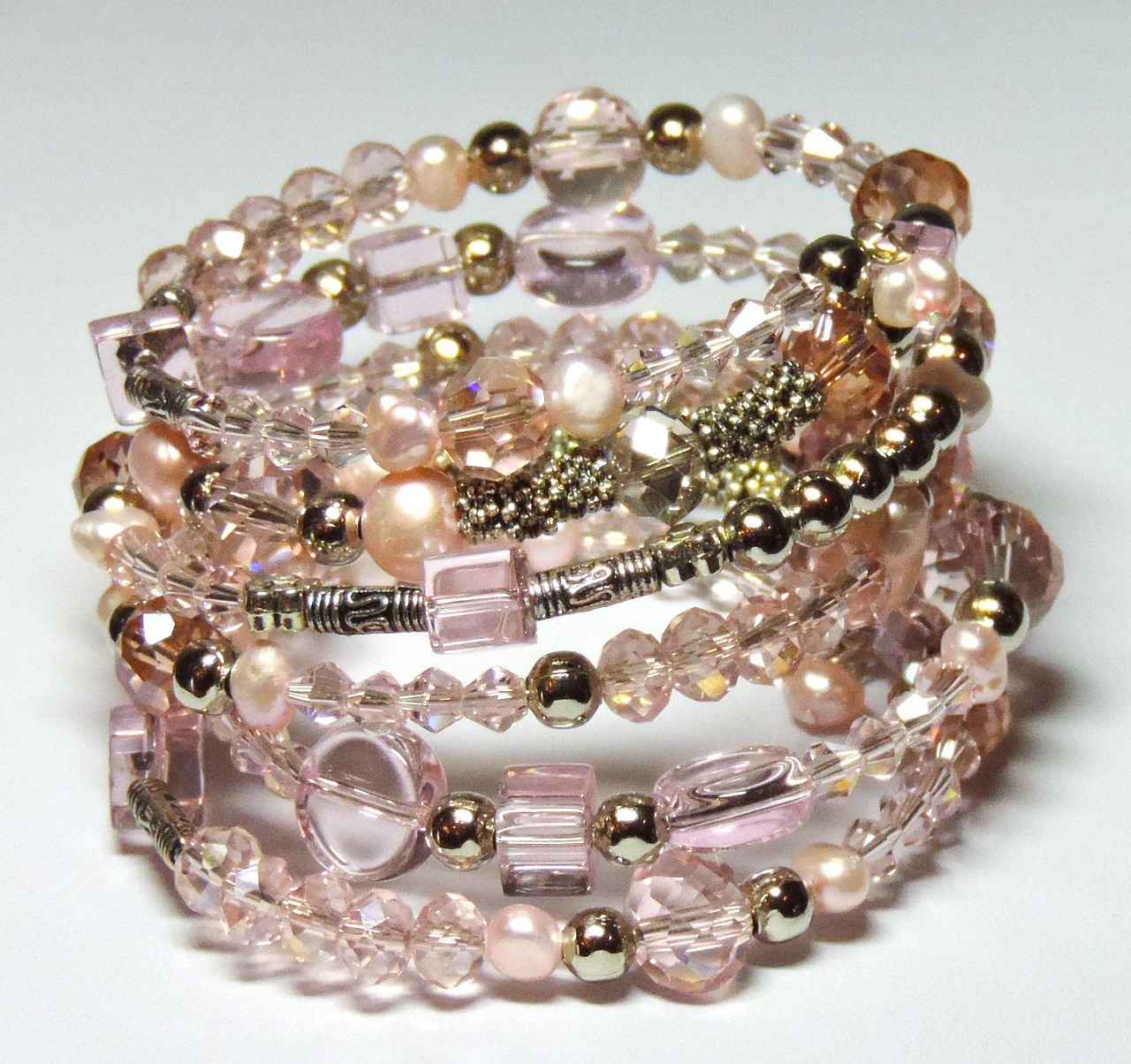
Alternatives to Ultrasonic Cleaning
When it comes to keeping your jewelry looking its best, ultrasonic cleaning is not always the ideal method for every piece. While it is effective for many types of jewelry, certain materials and settings may require alternative cleaning techniques to avoid damage. This section will delve into various , ensuring your treasured items remain in pristine condition.
Manual cleaning techniques can be both gentle and effective. Here are some recommended methods:
- Soapy Water Method: Mix a few drops of mild dish soap with warm water. Soak your jewelry for a few minutes, then use a soft brush to gently scrub. Rinse thoroughly and dry with a soft cloth.
- Toothbrush Technique: A soft-bristled toothbrush can be perfect for reaching intricate designs. Lightly scrub the jewelry with soapy water, ensuring you don’t apply too much pressure.
- Microfiber Cloth: For polishing and removing smudges, a microfiber cloth can effectively restore shine without scratching the surface.
For valuable or intricate pieces, professional cleaning services may be the best option. Here are some scenarios when you should consider seeking professional help:
- Heirloom Jewelry: If your jewelry has significant sentimental or monetary value, a professional can ensure it is cleaned safely without compromising its integrity.
- Complex Settings: Jewelry with multiple stones or intricate designs may require specialized equipment and expertise that only professionals possess.
- Restoration Needs: If your jewelry is damaged or shows signs of wear, professionals can provide restoration services that go beyond simple cleaning.
Many home remedies can also be effective for cleaning jewelry without the risks associated with ultrasonic cleaning. Here are a few popular options:
- Baking Soda Paste: Create a paste using baking soda and water. Apply it to the jewelry, let it sit for a few minutes, then rinse and dry. This method is particularly good for silver.
- Vinegar Solution: Soaking jewelry in a mixture of vinegar and water can help remove tarnish. However, avoid this method for porous stones.
- Club Soda: For a quick shine, soaking your jewelry in club soda can help lift dirt and grime effectively.
Using the right tools can further improve your jewelry cleaning process. Consider these:
- Jewelry Cleaning Kits: These kits often include specialized solutions and tools designed for different types of jewelry.
- Steam Cleaners: If you have access to a steam cleaner, it can be a great alternative for cleaning jewelry without harsh chemicals.
- Ultrasonic Cleaners for Safe Materials: While not suitable for all jewelry, some ultrasonic cleaners can be used on safe materials like certain metals.
In conclusion, while ultrasonic cleaning serves as an effective method for many types of jewelry, it is essential to recognize its limitations. By exploring manual techniques, considering professional services, and utilizing home remedies, you can ensure your jewelry remains beautiful and well-maintained. Each method has its own advantages, so choose the one that best suits your jewelry’s needs.
Manual Cleaning Techniques
are essential for maintaining the beauty and integrity of your jewelry. While ultrasonic cleaners are popular, they are not suitable for all types of jewelry. Therefore, understanding how to effectively clean your jewelry by hand can ensure it remains in pristine condition without the risk of damage. Below, we will outline the best practices for manually cleaning different types of jewelry.
Manual cleaning allows for personalized care tailored to the specific needs of your jewelry. This method is particularly beneficial for delicate pieces that may not withstand the rigors of ultrasonic cleaning. Here are some key advantages:
- Gentle Approach: Manual cleaning enables you to control the pressure and technique used, reducing the risk of scratches or damage.
- Attention to Detail: You can focus on intricate areas that may require extra care, ensuring a thorough clean.
- Safe for All Materials: Manual cleaning is suitable for a wider range of materials, including pearls, opals, and other sensitive gemstones.
To effectively clean your jewelry by hand, follow these guidelines:
Before you begin, gather the necessary supplies:
- Soft Cloths: Use lint-free, soft cloths to avoid scratching the surface.
- Soft-Bristled Brush: A toothbrush or a specialized jewelry brush can help reach intricate details.
- Cleaning Solution: Choose a mild soap or a specialized jewelry cleaner appropriate for the materials you are cleaning.
- Bowl of Warm Water: This will be used to soak the jewelry before cleaning.
Follow these steps to clean your jewelry safely:
- Soak: Place your jewelry in a bowl of warm, soapy water for a few minutes to loosen dirt and grime.
- Brush Gently: Using the soft-bristled brush, gently scrub the jewelry, paying close attention to crevices and settings.
- Rinse Thoroughly: Rinse the jewelry under lukewarm water to remove any soap residue. Ensure that you cover the drain to avoid losing any pieces.
- Dry Carefully: Pat the jewelry dry with a soft cloth. Avoid rubbing, as this could cause scratches.
Different materials require different care:
- Gold and Silver: These metals are generally durable but can tarnish. Regular cleaning with a soft cloth can help maintain their shine.
- Gemstones: Always check the hardness of gemstones. Softer stones like turquoise and lapis lazuli require extra caution.
- Pearls: Clean pearls with a damp cloth only, as they can be damaged by moisture and harsh chemicals.
If your jewelry is particularly valuable, intricate, or if you’re unsure about the cleaning process, consider seeking professional cleaning services. Experts can safely clean and restore your jewelry, ensuring it remains in excellent condition.
In summary, are an effective way to maintain your jewelry’s beauty while minimizing the risk of damage. By following the best practices outlined above, you can ensure your treasured pieces remain sparkling and in good condition for years to come.
Professional Cleaning Services
When it comes to maintaining the beauty and integrity of your jewelry, can be invaluable. While many people opt for DIY cleaning methods, there are specific instances where seeking the expertise of a professional is not only advisable but necessary. This section delves into the scenarios in which you should consider professional cleaning for your jewelry, as well as what you can expect from such services.
- Valuable Jewelry: If your jewelry is made of precious metals or contains valuable gemstones, it is wise to seek professional cleaning. Experts have the knowledge and tools to handle these pieces with care, ensuring they retain their value.
- Intricate Designs: Jewelry with intricate designs and settings, such as engagement rings or vintage pieces, may require specialized cleaning techniques that only professionals can provide.
- Restoration Needs: If your jewelry shows signs of wear, such as tarnishing or loose stones, professional cleaning can address these issues effectively, often including minor repairs as part of the service.
- Material Sensitivity: Certain materials, like pearls or opals, are delicate and require special care. Professionals are trained to clean these materials without causing damage.
When you decide to take your jewelry to a professional cleaner, it’s essential to know what to expect:
- Assessment: The cleaning process typically begins with a thorough assessment of your jewelry. The professional will examine the piece for any damage and determine the best cleaning method.
- Specialized Techniques: Professionals use various techniques, such as ultrasonic cleaning or steam cleaning, tailored to the specific needs of your jewelry. These methods are often more effective than home cleaning solutions.
- Safe Products: Professional cleaners use safe, high-quality cleaning solutions that are effective yet gentle on your jewelry. This ensures that your pieces are cleaned without the risk of damage.
- Restoration Services: Many professional cleaning services also offer restoration options, such as re-polishing and tightening loose stones, which can enhance the overall appearance of your jewelry.
Selecting the right professional cleaning service is crucial for the care of your jewelry. Here are some tips:
- Research: Look for reputable jewelers or cleaning services with positive reviews and recommendations. Check their credentials and experience in handling jewelry.
- Ask Questions: Don’t hesitate to ask about their cleaning methods, products used, and whether they offer any guarantees on their work.
- Insurance: Ensure that the service is insured. This provides peace of mind in case of any accidental damage during the cleaning process.
In summary, while DIY cleaning methods can be effective for routine maintenance, are essential for valuable, intricate, or sensitive jewelry. By understanding when to seek professional help and what to expect from these services, you can ensure that your jewelry remains in optimal condition, preserving its beauty and value for years to come.
Frequently Asked Questions
- Can I use an ultrasonic cleaner for all types of jewelry?
No, not all jewelry is suitable for ultrasonic cleaning. While gold and silver are generally safe, gemstones and delicate materials like pearls may not withstand the process. Always check the specific material before cleaning.
- What should I do if my jewelry has loose stones?
If your jewelry has loose stones, it’s best to avoid using an ultrasonic cleaner. The agitation can worsen the looseness, potentially leading to loss or damage. Consider manual cleaning or consulting a professional.
- How long should I run my ultrasonic cleaner?
The cleaning duration can vary based on the type of jewelry. Generally, 3 to 5 minutes is sufficient for most items, but always refer to the manufacturer’s guidelines for specific recommendations.
- What cleaning solution should I use?
Choosing the right cleaning solution is crucial. Use a solution specifically designed for ultrasonic cleaners, and ensure it is compatible with the type of jewelry you are cleaning to avoid damage.
- Are there alternatives to ultrasonic cleaning?
Yes! If ultrasonic cleaning isn’t suitable, you can opt for manual cleaning techniques or professional cleaning services. These methods can be effective while ensuring the safety of your jewelry.

